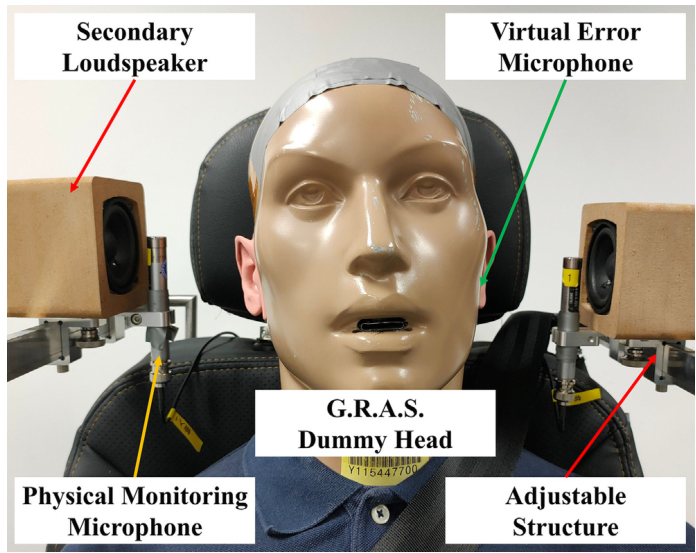The Promulgation of the Law of the People's Republic of China on Noise Pollution Prevention and Control represents a further focus on the prevention and control of noise pollution in China. Active noise control (ANC) is effective in attenuating low-frequency noise and has been used in a wide range of applications such as ANC headsets and ANC casings. With the strong development of new energy vehicles, ANC headrests are adopted in vehicles to suppress road noise around error microphones.
The structures used for ANC can be divided into feedforward and feedback structures. The feedback structure avoids the requirement for a time-advanced reference signal and is suitable for some applications where the reference signal is difficult to obtain. However, feedback controllers are unstable and the interference attenuation at low frequencies is generally accompanied by disturbance amplification at other frequencies, which is referred to as the waterbed lift. In addition, the uncertainty of the plant response due to slight head movements also tends to cause instability in the feedback controller. And it is not convenient to mount error microphones at the ear. Thus, a combination of virtual sensing method is usually required for compensation.
Recently, researchers from the Institute of Acoustics of the Chinese Academy of Sciences (IACAS) proposed a design method combining the remote microphone method (RMM) with a robust fixed feedback controller to achieve active noise control in a headrest with physical microphones situated far from the target zone. Design objectives of the controller are based on the proposed closed-loop gain margin constraint, which consider noise reduction performance, waterbed lift, and robustness against plant perturbations due to slight rotations of the head. Meanwhile, the design objectives are constructed with RMM to create a local zone of quiet far away from the physical monitoring microphone. Particle swarm optimization algorithm is employed for this multi-objective design problem to efficiently generate the feedback controller consisting of cascade second-order sections infinite-impulse-response (IIR) filters. Simulations and real-time experiments were conducted to demonstrate the superior noise reduction performance and robust stability of the designed IIR feedback controller in attenuating disturbances measured in a vehicle.
The research also provides a new approach for applications such as feedback ANC headphones and feedback ANC windows.
The research, published online in Applied Acoustics, was supported by National Natural Science Fund of China (No.11804365, No.11804368), IACAS Frontier Exploration (No.QYTS202009) and Open Fund of State Key Laboratory of Acoustics (No.SKLA202116).

Figure.1 Adopted ANC headrest system. (Image by IACAS)

Figure.2 Amplitude spectrum with various ANC methods in the ears under nominal condition in the chamber. (a) Direct control virtual microphone, left ear, (b) direct control virtual microphone, right ear, (c) direct control physical monitoring microphone, left ear, (d) direct control physical monitoring microphone, right ear, (e) control with RMM, left ear, (f) control with RMM, right ear. (Image by IACAS)
Reference:
ZHANG Zeqiang, WU Ming, YIN Lan, GONG Chen, WANG Jiajie, ZHOU Shuang, YANG Jun. Robust parallel virtual sensing method for feedback active noise control in a headrest. Applied Acoustics, 2022, 195:108815. DOI:10.1016/j.apacoust.2022.108815
Contact:
ZHOU Wenjia
Institute of Acoustics, Chinese Academy of Sciences, 100190 Beijing, China
E-mail: media@mail.ioa.ac.cn


